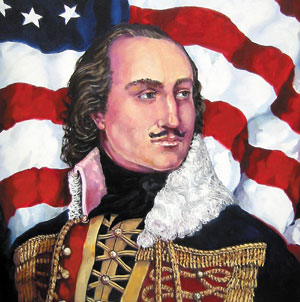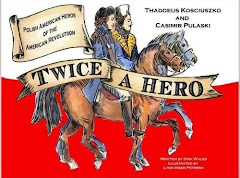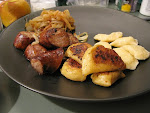 Walking on board the Carnival Liberty, I noticed the name tags of the crew members said not only their names, but their country of origin. It was astonishing to see the multitude of different countries that people came from and the variety of accents jumbled together over dinner conversations. Countries like India, Thailand, the Philippines, Canada, Russia, and Poland were on board such that it represented a microcosm.
Walking on board the Carnival Liberty, I noticed the name tags of the crew members said not only their names, but their country of origin. It was astonishing to see the multitude of different countries that people came from and the variety of accents jumbled together over dinner conversations. Countries like India, Thailand, the Philippines, Canada, Russia, and Poland were on board such that it represented a microcosm.Almost anywhere you go, you are bound to find someone that shares a certain quality with you. Whether you share a common country of origin, language, religion, ethnicity, or heritage, you can find something to talk about and a conversation almost always sparks up. I especially love when I discover that someone is Polish and I learn about their family background. During my cruise, this past week I was lucky enough to meet my two waiters, John and Ernesto, who were from the Philippines, as well as a waitress, Panyvee, who was from Thailand. These people were exceptional and had warm personalities.
Some of their culture was portrayed to my family and me when one waiter demonstrated his napkin-folding skills. Parts of Asia are very well known for origami, but I consider this napkin-folding “super-origami.” I also was fortunate to meet a Polish woman, Sofia, who worked at the coffee bar. Since cash was not used on the ship, we had to use a “sail-and-sign” card to purchase drinks or souvenirs. Whenever a purchase was made, the customer’s name would pop up and he or she would sign the receipt. When we purchased a coffee, Sofia immediately recognized my last name as Polish and pronounced it correctly the first time. I was pleasantly surprised. There was an immediate connection and conversation soon followed. We briefly talked about Poland and asked each other about their family. She explained to us that she grew up in Poland and vaguely mentioned her family. We told Sofia about ourselves and how we live as Polish-Americans. When we left to go back to the pool, we quickly said “thank you” and “good-bye” in Polish. A woman from Indonesia and another from Russia also worked at the coffee bar, which is somewhat ironic since Poland and Russia aren’t what you would call friends.
On the cruise we stopped at three different ports of call in the Western Carribean. We traveled to Cozumel, Mexico; Grand Caymen and Ocho Rios, Jamaica respectively. The culture in these three destinations varied from each other and the culture here in the United States. Almost immidietly upon entering each country I was able to detect a taste of the culture based upon what people were wearing, products for sale and the native's attitude towards tourists. In Mexico we were welcomed off the ship by Mexicans dressed as Indians. My cousin and I received a "warm" welcome when we had our picture taken with an Indian who kept getting us to smile by saying he was a Mexican Playboy. That day we mainly shopped around and eventualy stopped for lunch in Jimmy Buffet's Margaritaville, which was crawling with tourists who had a little too much to drink. A waitor made guacamole right in front of us and a Mexican clown snuck up behind me and stuck a balloon hat of a monkey with a palm tree on my head. Obviously knowing my luck my balloon hat was the biggest and most embarissing between my brother, my sister, my cousin and I. In Grand Caymen, however, we went snorkeling on a shore excursion and once again went to a Jimmy Buffet's Margaritaville. This Margaritaville had the most flare and the DJ's really got the crowd going by pouring free shots of tequila into anyone who volunteered and was legal. In Jamaica we shopped in a small series of stores which had security guards at every entrance. The natives were like sharks; they tried to get you to buy their service or product and they were very persistant. I felt safer in Mexico than in Jamaica, considering the barbed-wired fences surround you and the ship. Yet again we went to another Margaritaville, which had a water slide and pool right next to the dining tables. Overall, the three destinations presented some similarities but there were many other factors that greatly contrasted the cultures to that of the United States and even of Poland.
I know is something of a cliché, but you really do learn new things every day. When you meet a new person with the same heritage as yourself, you may learn new things about your heritage. The cruise was a great opportunity to compare and contrast the different cultures of the crew members, and the different ports of call. On the cruise, I visited Cozumel, Grand Cayman, and Ocho Rios. Each port of call had something different to offer – both in terms of the people and the landscape.
There are many opportunities for conversation based upon common factors that people share. Next time you are at a restaurant or on vacation and you meet someone, ask about his or her home, family, or heritage, and you’ll be sure to find strike up a conversation. The person that is sitting next to you at a restaurant, or working at a coffee shop could be Polish, Italian, or French. By talking to that person, you may learn something new. I was privileged to meet someone from Poland, someone with whom I shared a common heritage. By talking to Sofia about that common heritage, I was able to brighten her day just a bit, by reminding her of her home back in Poland.
945





